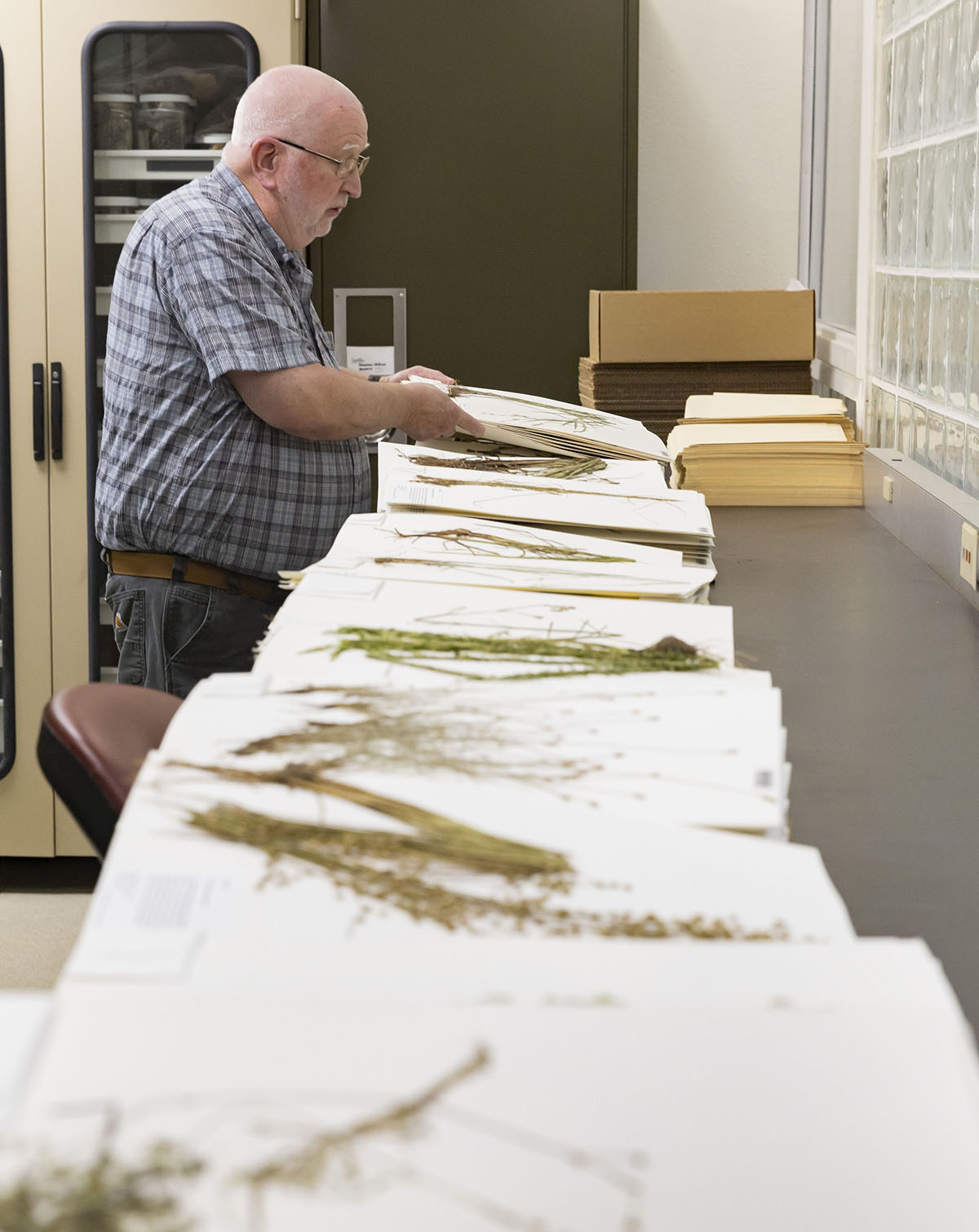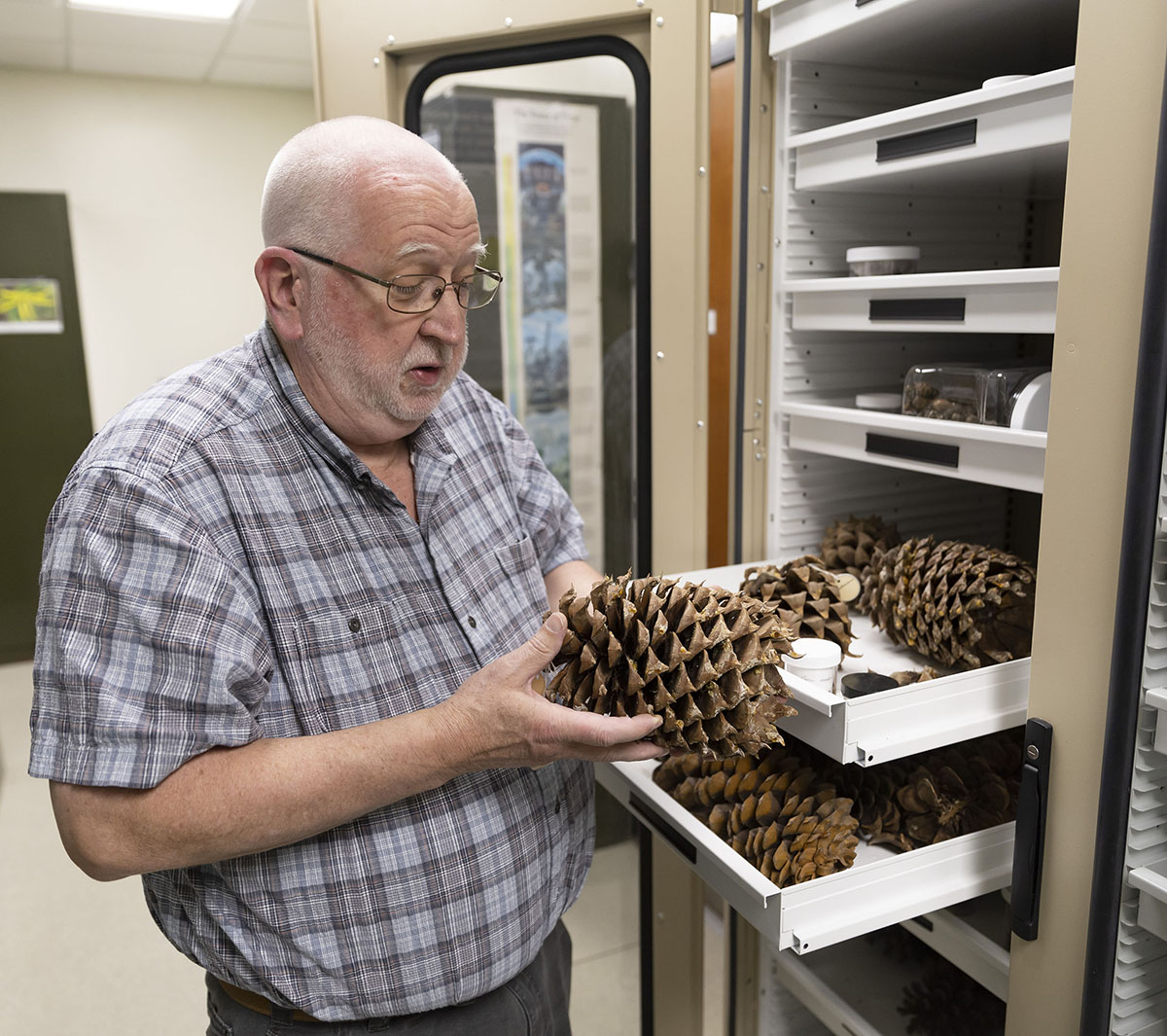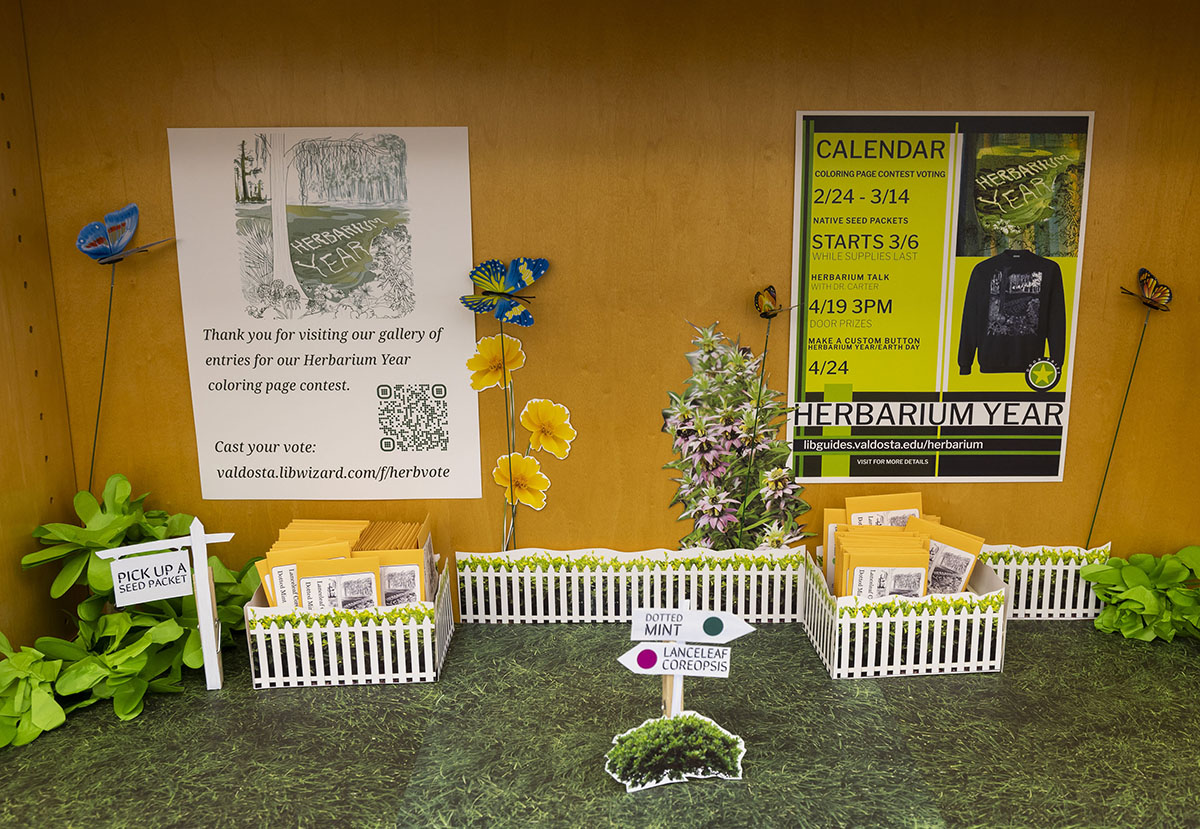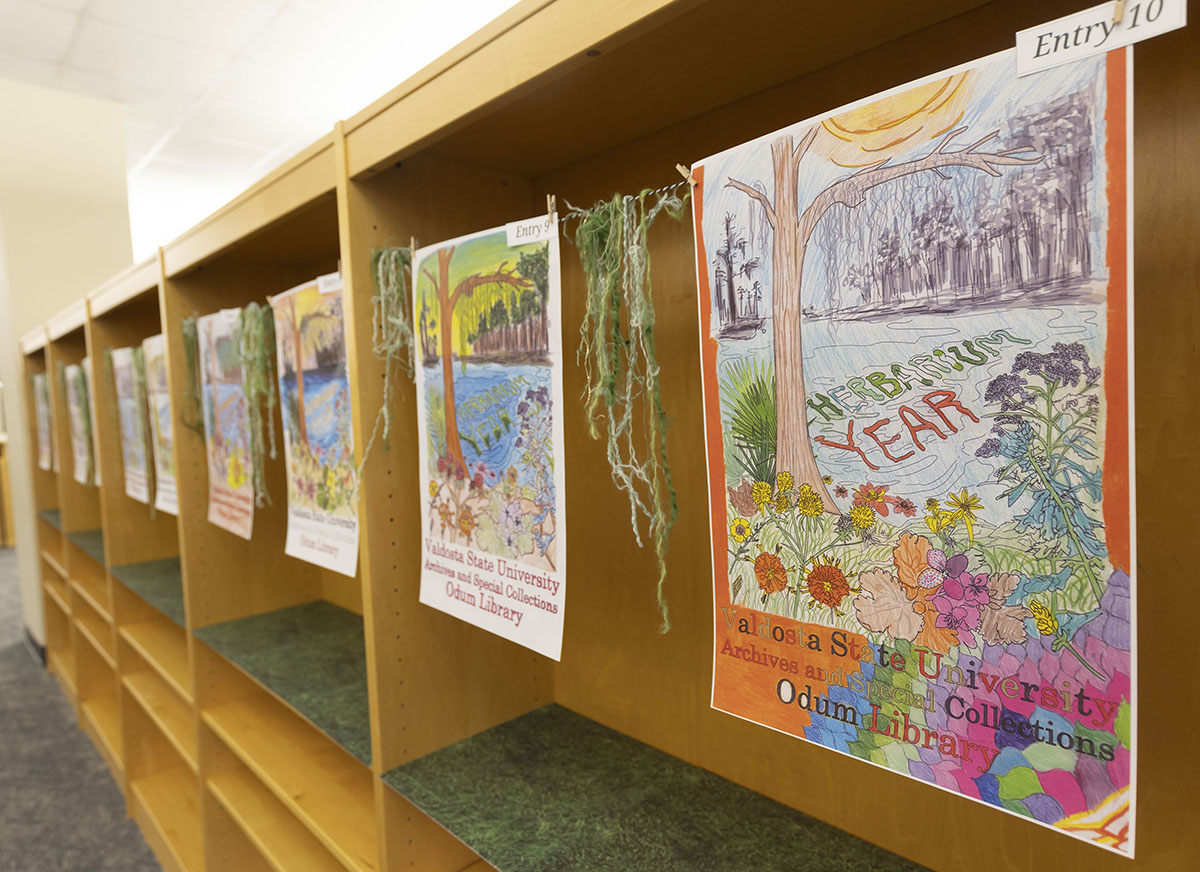March 29, 2023
23-34
Jessica Pope
Communications and Media Relations Coordinator
Herbarium Year: VSU’s Richard Carter Discusses Significance of Plant Specimen Resource

|
|
With more than 90,000 specimens, Valdosta State University is home to the second largest herbarium in Georgia. Pictured is Dr. Richard Carter, professor in the Department of Biology and herbarium curator. He will discuss the herbarium at VSU and its local and global importance at 3 p.m. Wednesday, April 19, in the VSU Odum Library Auditorium.
|
VALDOSTA — With more than 90,000 specimens, Valdosta State University is home to the second largest herbarium in Georgia.
“The herbarium is an important scientific resource, as demonstrated in recent years by National Science Foundation support, three grants totaling nearly $400,000,” shared Dr. Richard Carter, professor in the Department of Biology and herbarium curator. “In keeping with our institutional mission, the geographical emphasis of the herbarium is regional, especially the Coastal Plain region of Georgia. The herbarium provides a foundation for our knowledge of native and naturalized plants of our region. A museum-quality, scientific archive, the herbarium supports teaching, research, and public outreach at Valdosta State.”
To recognize the significance of the on-campus herbarium, VSU’s Odum Library designated the 2022-2023 academic year as Herbarium Year.
“The scientific community knows how important this resource is,” shared Deborah Davis, university archivist. “It is used all over the United States and internationally, and VSU receives more than 1,000 requests for samples from scientists each year.”
During the fall, Odum Library hosted an exhibit of herbarium specimen photographic scans. This spring the library is home to a photography exhibit of flowers and plants; the photos were taken by Carter and his students while conducting field research. Davis said the images are “bright and strong.” Both exhibits were designed by Huston Smith, a VSU Archives and Special Collections intern who will graduate with a Master of Education in Higher Education Leadership on May 5; he previously earned a Bachelor of Arts in Biology in 2019.
To further celebrate Herbarium Year at VSU, Carter will discuss the herbarium at VSU and its local and global importance at 3 p.m. Wednesday, April 19, in the VSU Odum Library Auditorium.
“VSU Archives and Special Collections and Odum Library have had a long relationship with the herbarium, from tours to database and website creation,” Davis said. “We are partners in preserving valuable resources. The event on April 19 will include refreshments, door prizes, a gallery tour of field photographs, and a talk to learn about the work and impact of the herbarium in South Georgia.”
Herbarium Year coloring pages and seed packets are available and may be picked up at VSU’s Odum Library.
VSU’s herbarium is a permanent collection of carefully pressed and dried plant specimens used for both teaching and research. Its specimens, called vouchers, document plant diversity and provide important reference specimens for various kinds of research, including floristic, ecological, agricultural, physiological, and genetic work.
Started from a handful of specimens in the 1920s, VSU biologist Beatrice Nevins accumulated a teaching collection of about 1,000 specimens. The collection grew to about 30,000 accessions under the care of Wayne Faircloth, who established it as a bona fide research facility during his time at the university. Since assuming curatorship in 1984, Carter has grown the herbarium to more than 90,000 specimens.
VSU’s herbarium is the second largest herbarium in Georgia, with the largest housed at the University of Georgia. It is particularly important in documenting the biodiversity of native and naturalized plants of the Coastal Plain region of Georgia and, more generally, the flora of the Southeastern United States and of certain specialized plant groups such as the sedge and grass families.
Grants from various organizations, including the National Science Foundation, the U.S. Department of Defense, the U.S. Department of Agriculture, the U.S. Fish and Wildlife Service, the Georgia Department of Natural Resources, and the Tall Timbers Research Station, support the important work of the herbarium and provide external validation of its significance as a research facility.
The herbarium is also an important resource for VSU students. It provides specimens used in a variety of academic course, from dendrology to plant systematics to local flora, plant morphology, and directed study. Students are also invited to assist with processing, digitizing, and cataloging voucher specimens and to participate in other aspects of botanical and ecological research, such as intensive biodiversity inventories of designated natural areas in the region. Students assisting in the herbarium have presented results of their research at state, regional, and national academic conferences and through publication in professional journals.
The core work of VSU’s herbarium — to document the biodiversity of the region — is increasingly important as habitats are degraded or destroyed and populations of plant species are driven to extinction by climate change and habitat loss. Although most voucher specimens in the herbarium have been collected since 1940, some obtained through specimen exchange programs with older institutional herbaria date back to the 1800s. The earliest specimen in the herbarium is of a plant in the heath family called little wicky (Kalmia hirsuta) that was collected in 1837 in East Florida. Because the herbarium documents the history of plant life in the region, the specimens and their label data can provide insight into how the flora and ecosystems in the region have changed over time.
The VSU Herbarium specimens are stored and preserved in more than 100 special steel cabinets, held in a climate-controlled space within VSU’s Hugh C. Bailey Science Center. The National Science Foundation funded the preparation of high-resolution photographs of the specimens and digitization of their label data into a searchable database. These images and their label data are available online to researchers at other institutions, state and federal agencies, natural resource managers, and the general public.
On the Web:https://www.valdosta.edu/academics/library/
https://www.valdosta.edu/biology/
Newsroom
- Office of Communications Powell Hall West, Suite 1120
-
Mailing Address
1500 N. Patterson St.
Valdosta, GA 31698 - General VSU Information
- Phone: 229.333.5800
- Office of Communications
- Phone: 229.333.2163
- Phone: 229.333.5983


